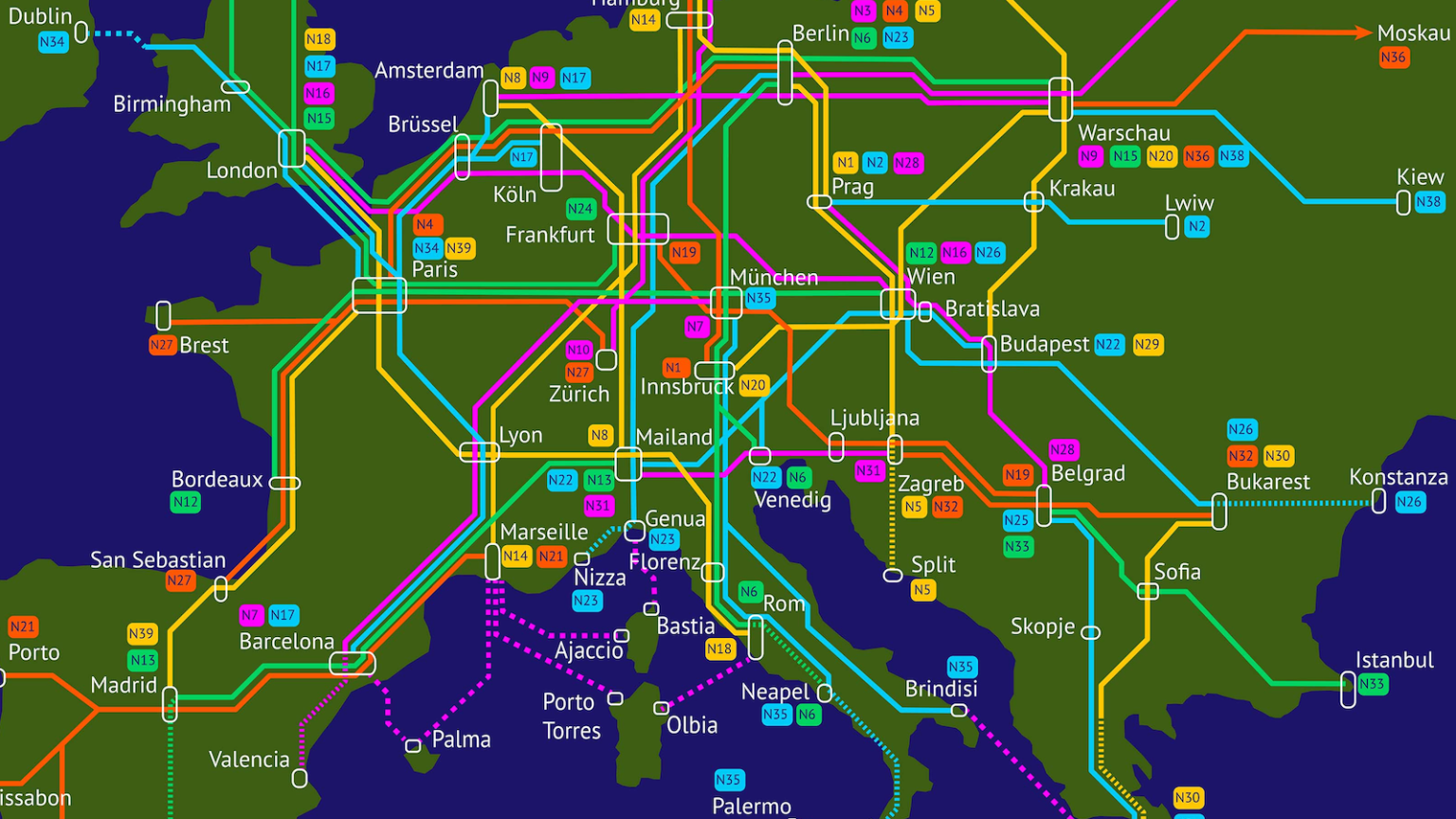
In The Independent’s new travel trends column, Trendwatch, we dig into the types of trip, modes of transport and top buzzwords to watch out for.
Influenced by my excellent editor and flight-free hero, Helen Coffey, since joining The Independent I have become hyper aware of opportunities for taking a train or ferry rather than a plane.
While I freely admit to still indulging in the odd mile-high seat, anywhere there’s a fast, comfy train link to be found – especially within Europe – I’ll be on it.
Take the Eurostar: no time drained travelling to the airport, waiting around airside, worrying about lost baggage or fretting over liquids over 100ml. Instead, hopping onboard at St Pancras, you can sling your suitcase within sight, kick back with decent wifi and speedy catering service, step off in the centre of Paris and even lug some wine-heavy French shopping back with you. Au revoir, baggage claim.
Equipped with this new spidey-sense for a nifty rail option, I was excited to read about a flurry of planned sleeper trains that are aiming to more comprehensively connect Europe’s cities – allowing us to zip seamlessly between them as we catch some shuteye. Imagine the Eurostar carrying on to Budapest or Athens, with bunks on hand for the longer legs – great for the environment, and a money-saver on overnight stays.
Germany’s Night Sprinter network would connect the UK with top city-break spots such as Barcelona, Florence, Copenhagen and Stockholm
Case in point: the ambitious network of night trains across Europe proposed by Germany’s Green Party in September, which would connect the UK with top city-break spots such as Barcelona, Florence, Copenhagen and Stockholm.
Nicknamed the “Night Sprinter” it was proposed for a phased launch in 2030, with a network map that would ultimately join the dots between some 200 cities, starting in the UK at one end but extending as far as Moscow and Istanbul in the east, and Palermo, Palma and Athens in the south.
The Night Sprinter plans follow the up-and-running Nightjet trains linking Vienna and Paris and Amsterdam and Zurich respectively, which launched in December 2021, with Graz to Warsaw to follow in June. The Paris-Vienna line takes you along part of the Orient Express route at a much lower price (also, in fairness, minus the gilded mirrors and lobster dishes of the latter).

Specialist operators such as Ffestiniog can package up whole journeys incorporating your Eurostar from London, plus hotel nights in Paris and Vienna. This summer, Nightjet’s operator, OBB , will also launch a journey from Vienna to Cluj-Napoca in Transylvania, Romania.
Meanwhile, the Dutch-Belgium run European Sleeper will start services this summer, departing Brussels in the evening and zipping through Antwerp, Amsterdam, Berlin and Dresden before arriving in Prague – tickets will go on sale in April, with fares TBC.
Further afield, new high-speed, double-decker sleeper trains premiered last month in Shenzhen, China, while in April, Amtrak revived the sleeper cars on its Northeast Corridor trains.
Bed-equipped cabins on these journeys won’t set you back much more than a budget flight and associated airport transfers, either – full-bed cabins on Nightjet start at €89.90 (£75), while sleepers on the Romania journey can expect to pay from €59 (£49).
If we are going to convince travellers to stop flying, we have to set a new benchmark for night trains, including 100 per cent private cabins, a good bar and restaurant and a new modern design
But even the luxury market is getting involved: in June, French start-up Midnight Trains released images of glam interiors and bar carriages on its proposed sleeper trains, which are slated to start routes out of Paris to destinations including Madrid, Vienna, Berlin and Porto from 2024.
Meanwhile, Orient Express La Dolce Vita, a rival for the Belmond-owned Venice-Simplon Orient Express, is set to launch in 2023 with various itineraries connecting Rome, Paris, Istanbul, and Split. Early renderings show a bright, retro midcentury-style aesthetic a world away from the ritzy old Belmond trains.
“It is thrilling to be bringing the refined nomadic spirit of Orient Express back to life for a new generation of travellers,” said Stephen Alden, CEO of Raffles and Orient Express, Accor, at its December announcement.
It seems everyone is cashing in on the allure and romance of long-haul train travel.

And aside from any carbon savings, there is something deliciously seductive about making your journey – albeit longer – part of the travel experience. Swaying dining cars, sashaying down corridors, being lulled to sleep as the views whizz past at 140mph.
“We believe that if we are going to convince travellers to stop flying, we have to set a new benchmark for night trains, including 100 per cent private cabins, a good bar and restaurant, a digital experience from end to end and a new modern design,” the co-founder of Midnight Trains, Romain Payet, told The Wall Street Journal in August.
In short, it’s time to stop seeing cross-continental trains as the sole preserve of backpackers and inter railers setting off on a shoestring budget.
Mark Smith, aka rail travel expert extraordinaire The Man in Seat 61, is a fan of the concept.
“Climate change means people want to make more and longer journeys by train instead of plane,” he says.
Aside from any carbon savings, there is something deliciously seductive about making your journey – albeit longer – part of the travel experience
“With a sleeper train, you can leave in the evening and arrive in the morning, taking as little (or less) time out of your day as you would for a flight, on journeys where daytime trains – even high-speed ones – would take seven or eight hours.”
He cites OBB as one operator which “has found a way to operate sleepers profitably”, as well as praising private operators such as RegioJet, Snalltaget and European Sleeper. The French government, he says, is also supporting the return of various French sleeper trains to the tracks.
So what’s the catch?
“It’s still tough to make sleeper trains work commercially, and much work still needs to be done to make the conditions right,” says Smith.
Especially in Europe, where the EU has mandated that rail infrastructure must be separated from the train itself, with sleeper train operators charged local access fees to run a service across a country’s railways.
These fees vary from country to country, and can defeat sleeper train start-ups, which are already challenging to run at a profit.
Essentially, “track access charges, and challenges around building and leasing new sleeper train rolling stock are frustrating expansion,” says Smith.
Hopefully, the signs in Europe point to proper investment in comfy, efficient, carbon-saving sleeper trains – with very real and increasing interest from travellers inspiring more and more of these nocturnal routes.







